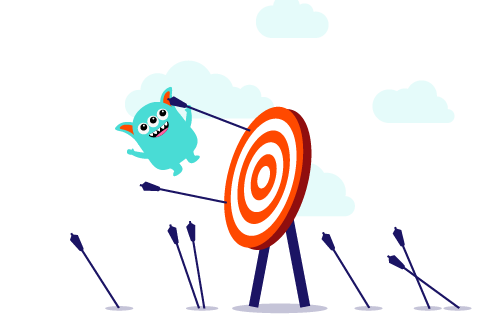What type of channel incentive will get the best results!
Contents
If you’re new to channel incentives or are simply looking for fresh ideas to ensure your next incentive programme is Kick-Ass, this blog is for you! We’ll provide insights and inspiration on what type of channel incentive is the most effective. While many channel incentive strategies focus on rewarding participants for closing sales, it’s important to take a step back and clearly define your business goals.
Do you want to boost sales revenue, enhance the skills of your channel partners, capture mindshare, or foster long-term relationships? Once your objectives are clear, you can explore the various types of channel incentives available to help you achieve those goals.
Channel incentives, also known as channel incentive programmes or channel partner incentives are the ideal mechanic to drive meaningful actions in a very competitive market.
Great channel sales incentives start with your end goal
When crafting effective channel incentives, begin by establishing what you want to achieve – your end goal.
So, before you dive into the details of how to reward your participants or what metrics you’ll use to measure success – you need to define the purpose of your channel incentive.

The goals of your incentive plan will guide every decision you make. Here’s why this approach is important:
Align your channel incentives with strategic objectives
Whether you need to increase overall sales, acquire new customers, or promote a specific product, your incentive should directly support those objectives.
Without a clear goal, it’s easy to craft a channel incentive that looks appealing but fails to deliver meaningful results.
Tailor your channel incentives
Different goals require different types of rewards. For example, if your objective is to generate revenue quickly, your incentive might focus on offering prizes for reaching specific sales targets within a set timeframe. On the other hand, if your goal is to educate sales reps, your incentives may focus on training completion or certifications.
Focus on measurable outcomes
Starting with a clear goal allows you to define specific metrics to track. If you aim to capture leads, your measure of success may be the number of qualified leads submitted by your partners. If you’re focusing on acquiring new logos (new customers), you can track the number of first-time buyers. The key is to ensure that your metrics align with the broader objective.
Examples of channel incentive goals
There are a variety of possible objectives for a channel sales incentive, including:
- Generate sales and revenue: Drive quick, impactful sales growth by rewarding partners for hitting revenue milestones
- Acquire new logos (customers): Incentivise partners to bring in new customers, expanding your market reach
- Educate sales reps: Ensure channel partners’ teams are well-versed in your product by offering rewards for completing training
- Skill up technical teams: Help your partners’ pre-sales or technical teams gain product expertise by providing certification-based incentives
- Create pipeline: Encourage partners to generate and deal register leads
- Book product demos: Increase product exposure by rewarding partners for setting up demonstrations for prospects
- Develop cold leads: Provide incentives for nurturing cold or unresponsive leads into qualified opportunities
By focusing on the end goal, you can design a channel incentive programme that not only motivates your channel partners but drives the outcomes that support your business growth.
Do a deep dive in your data
To help ascertain and validate the key objective(s) it is important to examine your sales data. Analysing your revenue, pipeline, conversion rates and the sales cycle will help you determine what type of channel incentive will work best for the products or services you want to promote through your channel.
It will also identify the best time to run an incentive based on your historical sales reports.
What are the benefits of Channel Incentives?
Once you understand your goals and have processed your data, you need to understand the benefits of your incentive programmes. This is key to establishing which channel incentive type will reap the greatest rewards for your business.
This insight allows you to tailor your incentive programmes to enhance motivation, drive engagement, and ultimately achieve better performance across your channels.
Here are some of the main benefits of channel incentive programmes:
- Increased sales and revenue
- Enhanced partner engagement
- Improved product focus
- Faster market penetration
- Better partner loyalty and partner relationships
- Enhanced brand awareness and brand exposure
What type of channel incentives works best?
Once you’ve determined the objectives of the incentive and carried out the data analysis, you can choose the type of channel incentive programmes you need to launch to generate your desired results.
In our experience, here are the incentive types that deliver the strongest results:
Sales accelerator incentives
The most common objective for a channel incentive is to bring in more revenue. A sales accelerator incentive does precisely that. When defining your incentive, focus on encouraging the acceleration of promising deals, rather than rewarding the closure of deals that are already likely to close.
Remember, you aim to shorten the sales cycle and increase deal volume – rewarding sales teams for closing deals that will close anyway is not the aim here!
Want to know more about how Channel Incentives can increase sales?
Deal registration incentives
In business, the sales pipeline is crucial – no pipeline and your sales will soon dry up!
A deal registration incentive (DR) focuses your channel sales teams on registering new sales opportunities. This medium-term strategy contributes to revenue generation but may have a delayed conversion from opportunities to closed deals, depending on the sales cycle.
Analyse your data to predict the closure rate of deals at various stages in your sales pipeline. It’s important to consider the relationship between DR and Sales Accelerator incentives. If you are pulling forward deals you are moving forecast revenue. That forecast revenue needs to be replaced with new opportunities in the pipeline!
Enablement and training incentives
A longer-term play, but by no means less valuable, is the enablement incentive. This ensures sales and technical teams at your channel partners fully understand how to use, position, and sell your products and services.
Incentivising key channel roles to become more knowledgeable about your products and services will give them the confidence to lead with your products in their customer engagements and become brand advocates. Helping your channel partners develop their expertise and become the trusted advisors of your mutual customers will protect your existing customer base.
It also increases your channel partner’s propensity to choose your products over your competitors when talking to new prospects. Incentivising technical teams to gain certifications increases technical capabilities, improves marketing effectiveness and enhances a channel partner’s stature in the channel and marketplace. An enablement incentive will often precede or accompany other types of incentives, culminating in sustained growth for both you and your channel partners.
Channel incentives vs. channel incentive programmes
We have been running channel incentives at The Essential Agency for years. We know channel incentives run in isolation generate less ROI than continuous channel incentive programmes. There are a few reasons for this:
Programmes allow for consistency that drives engagement
A one-off incentive may capture attention but quickly fade once the reward period ends.
A continuous programme reinforces behaviour and builds long-term loyalty, ensuring partners stay focused on their goals over time.
Programmes build lasting relationships
A sustained programme helps cultivate stronger, more loyal relationships with your channel partners. This will support your partner retention goals too. They begin to see your company as a reliable, long-term business partner rather than one offering sporadic, transactional opportunities.
Incentive programmes reinforce desired behaviours
Changing behaviour takes time. A long-term incentive programme reinforces the behaviours you want to see from your partners, whether it’s pushing a specific product, capturing more leads, or increasing demo bookings. By continuously rewarding these behaviours, they become habitual for your channel partners, leading to sustained success.
Essentially, channel incentive programmes yield far better results than transactional incentives.
Rewarding your participants
The last piece of the puzzle is finding the best rewards for your participants. You may, mistakenly, believe that branded merchandise rewards will motivate your participants! Earlier this year, we ran in-depth channel incentive research that highlighted the huge disconnect between what is being offered, and what your participants are motivated by.
In short, your participants want a fiscal reward, usually Amazon vouchers. For more information on what your participants want, download our Channel Incentive report.
Summary
Channel incentive programmes, also known as channel sales incentive programmes, are great tools for activating your channel and reaching your goals with resellers, distributors and other partners.
One of our top tips is to incorporate gamification into your incentive programmes. Check out our blog on gamification for more insights.

Finally, keep your channel incentive structure simple. Make it easy to understand, easy to sign up, and easy to access rewards. This will encourage more participants to engage with your incentive, as they won’t feel overwhelmed or confused by complicated rules. Communicate the benefits of participating, and ensure the claiming process is straightforward.
It’s important to note that channel incentives differ from Marketing Development Funds (MDF) or Sales Performance Incentive Funds (SPIF). While all three tools motivate and support channel partners, they serve distinct purposes.
Ready to launch a channel incentive but unsure of where to start? Our scorecard is crafted to reveal the incentive blind spots of tech channel marketers and sales leaders. It offers immediate, practical steps to enhance your incentives, empowering you to deliver outstanding rewards to your channel!
Read more Channel Incentive Blogs here